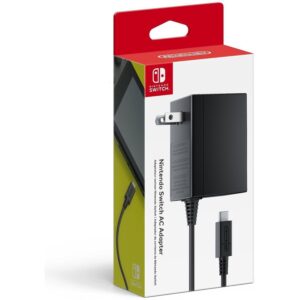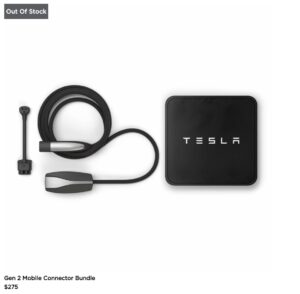Looking to connect 6 12V batteries to make 24V? You’ve come to the right place! In this article, we’ll guide you through the process step by step, making it easy to understand and implement. Whether you’re working on a DIY project or need to power a specific device, knowing how to connect these batteries is crucial. By the end, you’ll have the knowledge and confidence to tackle this task effortlessly. So, let’s dive right in and explore how to connect 6 12V batteries to make 24V, shall we?
How to Connect 6 12V Batteries to Make 24V
In certain applications, such as in the automotive, marine, or renewable energy industries, it may be necessary to create a higher voltage power source by connecting multiple batteries together. One common scenario is connecting six 12-volt batteries to generate a 24-volt system. This guide will walk you through the step-by-step process of connecting these batteries to create a 24-volt power supply.
What You’ll Need
Before you begin, gather the following materials and tools:
- Six 12-volt batteries
- Battery cables
- Wire cutters/strippers
- Wrench or socket set
- Voltmeter
- Electrical tape
Step 1: Safety First
Whenever working with batteries, it’s important to prioritize safety. Follow these precautions:
- Ensure you are wearing appropriate personal protective equipment, such as safety goggles and gloves.
- Work in a well-ventilated area to prevent the buildup of potentially harmful gases.
- Turn off all electrical equipment connected to the batteries and disconnect any external power sources.
Step 2: Battery Selection
Choosing the right batteries for your 24-volt system is crucial. Here are a few considerations:
- Select batteries with the same voltage rating (12 volts) and capacity to ensure balanced performance.
- Opt for deep-cycle batteries, as they are designed to handle repeated charging and discharging cycles.
- Check the physical dimensions and weight of the batteries to ensure they will fit in the desired location.
Step 3: Battery Placement
To connect the batteries in series, arrange them in a specific order. Here’s how:
- Place the batteries side by side in a secure and well-ventilated location.
- Ensure there is enough space between the batteries to allow for proper airflow and cooling.
- Consider using battery trays or holders to keep the batteries in place.
Step 4: Wiring Connections
Now it’s time to connect the batteries in a series configuration. Follow these steps:
- Identify the positive and negative terminals on each battery. The positive terminal is usually marked with a “+” symbol or a red color, while the negative terminal is marked with a “-” symbol or a black color.
- Connect a battery cable from the negative terminal of the first battery to the positive terminal of the second battery.
- Repeat the process, connecting the negative terminal of the second battery to the positive terminal of the third battery.
- Continue this pattern until you connect the negative terminal of the fifth battery to the positive terminal of the sixth battery.
- The positive terminal of the first battery and the negative terminal of the sixth battery will be the two remaining free terminals.
- Use battery cables to connect the positive terminal of the first battery to your positive load terminal.
- Connect the negative terminal of the sixth battery to your negative load terminal using another battery cable.
Step 5: Testing and Troubleshooting
After making the necessary connections, it’s important to test your 24-volt battery bank before putting it into full operation. Here’s what you should do:
- Double-check all the connections to ensure they are secure and properly tightened.
- Measure the voltage across the positive and negative load terminals using a voltmeter. It should read approximately 24 volts.
- If the voltage reading is significantly different or zero, recheck your connections and make any necessary corrections.
- Ensure all electrical connections are insulated with electrical tape to prevent accidental short circuits.
By following these steps, you can successfully connect six 12-volt batteries to create a 24-volt power supply. Whether you’re powering a boat, an RV, or a renewable energy system, understanding the proper method for connecting batteries is essential for safe and reliable operation.
Remember, always exercise caution when working with batteries, and consult the manufacturer’s guidelines and recommendations for your specific battery model. With the right materials, tools, and knowledge, you can harness the power of multiple batteries and create a powerful 24-volt system for your specific needs.
Frequently Asked Questions
How do I connect 6 12v batteries to make 24v?
To connect 6 12v batteries in order to create a 24v system, you can follow the steps below:
What materials do I need to connect 6 12v batteries to make 24v?
To connect 6 12v batteries and create a 24v system, you will need the following materials:
Can I connect 6 12v batteries in series to make 24v?
Yes, you can connect 6 12v batteries in series to make 24v. In series connection, the positive terminal of one battery is connected to the negative terminal of the next battery, creating a chain-like connection. This results in the total voltage being the sum of the individual battery voltages.
Can I connect 6 12v batteries in parallel to make 24v?
No, you cannot directly connect 6 12v batteries in parallel to make 24v. Connecting batteries in parallel means connecting the positive terminals together and the negative terminals together, resulting in the same voltage but increased amp-hour capacity. To achieve a 24v system, you will need to connect the batteries in series.
What precautions should I take when connecting 6 12v batteries to make 24v?
When connecting 6 12v batteries to make 24v, it is important to take certain precautions:
Can I use different capacity batteries when connecting 6 12v batteries to make 24v?
While it is generally recommended to use batteries of the same capacity and brand when connecting them in series, you can use batteries with different capacities. However, it’s important to note that the overall capacity and performance of the battery bank will be limited by the battery with the lowest capacity. It is advisable to use batteries of the same capacity to ensure optimal performance.
Final Thoughts
To connect six 12V batteries to make a 24V system, follow these simple steps. First, gather six identical 12V batteries and arrange them side by side. Next, connect all the positive (+) terminals of the batteries together using a series connection. Then, connect all the negative (-) terminals in the same manner. Finally, you will have a 24V battery bank by connecting six 12V batteries in series. Now you can enjoy the increased voltage for your desired application. How to connect 6 12V batteries to make 24V is a straightforward process that ensures a reliable power source.


